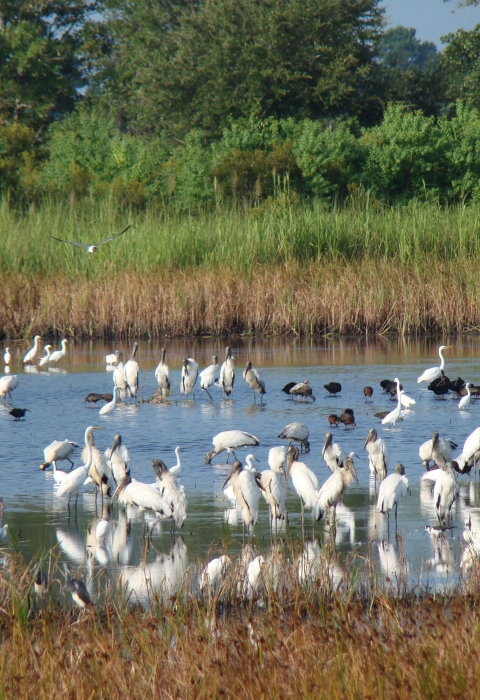Laws and Regulations
At E.F.H. ACE Basin NWR, treaties, laws, administrative guidelines, and policy guidelines assist the refuge manager in making decisions that pertain to natural, historical, and cultural resources; research and recreation on refuge lands; and provide a framework for cooperation between ACE Basin NWR and other partners, such as the South Carolina Department of Natural Resources, Ducks Unlimited, The Nature Conservancy, The Lowcountry Open Land Trust, Nemours Wildlife Foundation, and private landowners.
Lands within the Refuge System are closed to public use unless specifically and legally opened. No refuge use may be allowed unless it is determined to be compatible. A compatible use is a use that, in the sound professional judgment of the refuge manager, will not materially interfere with or detract from the fulfillment of the mission of the Refuge System or the purposes of the refuge. All programs and uses must be evaluated based on mandates set forth in the Improvement Act.
Those mandates are to:
- contribute to ecosystem goals, as well as refuge purposes and goals;
- conserve, manage, and restore fish, wildlife, and plant resources and their habitats;
- monitor the trends of fish, wildlife, and plants;
- manage and ensure appropriate visitor uses as those uses benefit the conservation of fish and wildlife resources and contribute to the enjoyment of the public; and
- ensure that visitor activities are compatible with refuge purposes.
The Improvement Act identifies six priority wildlife-dependent recreational uses. The uses are hunting, fishing, wildlife observation, wildlife photography, and environmental education and interpretation. As priority public uses of the Refuge System, they receive priority consideration over other public uses in planning and management.





